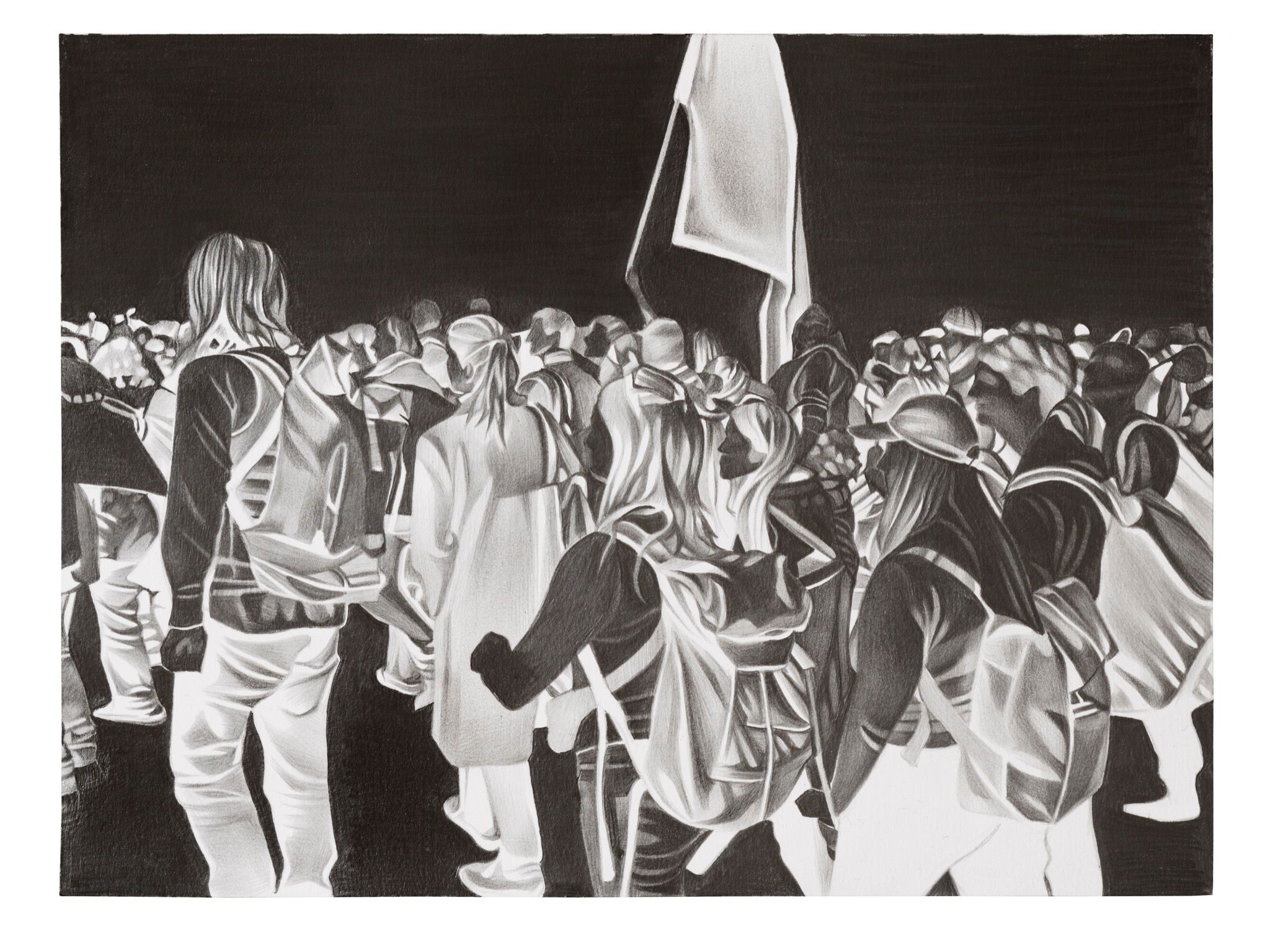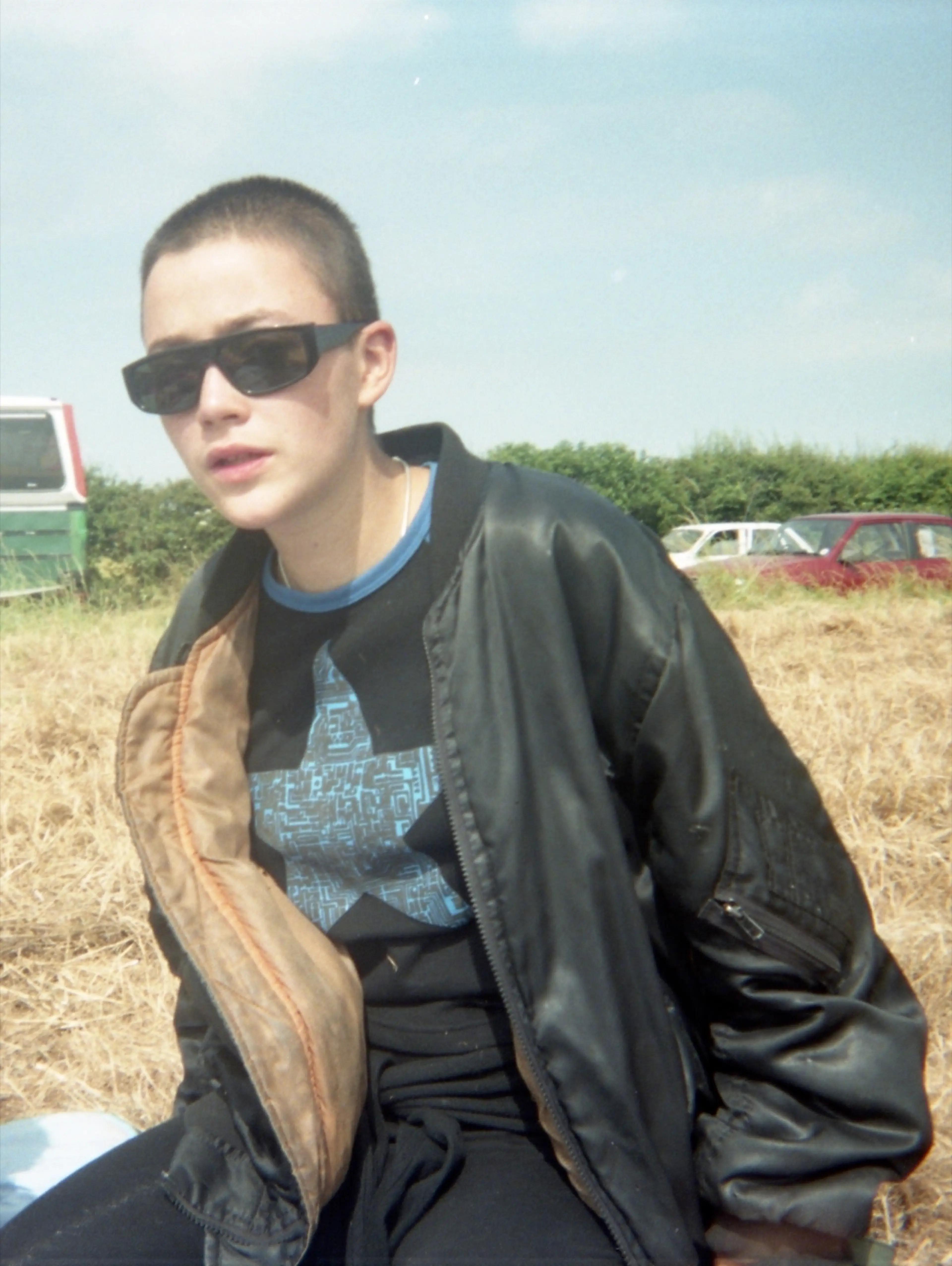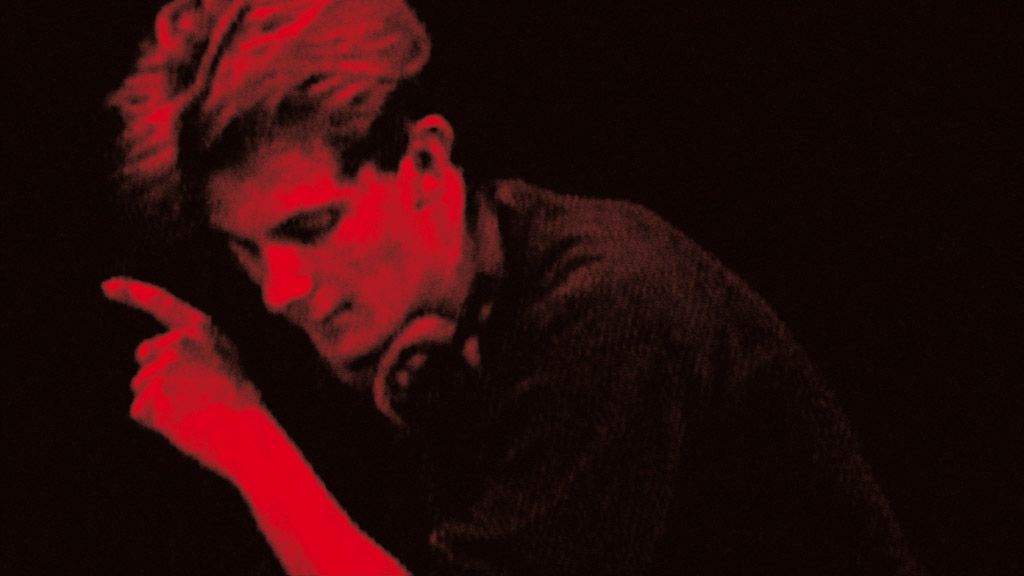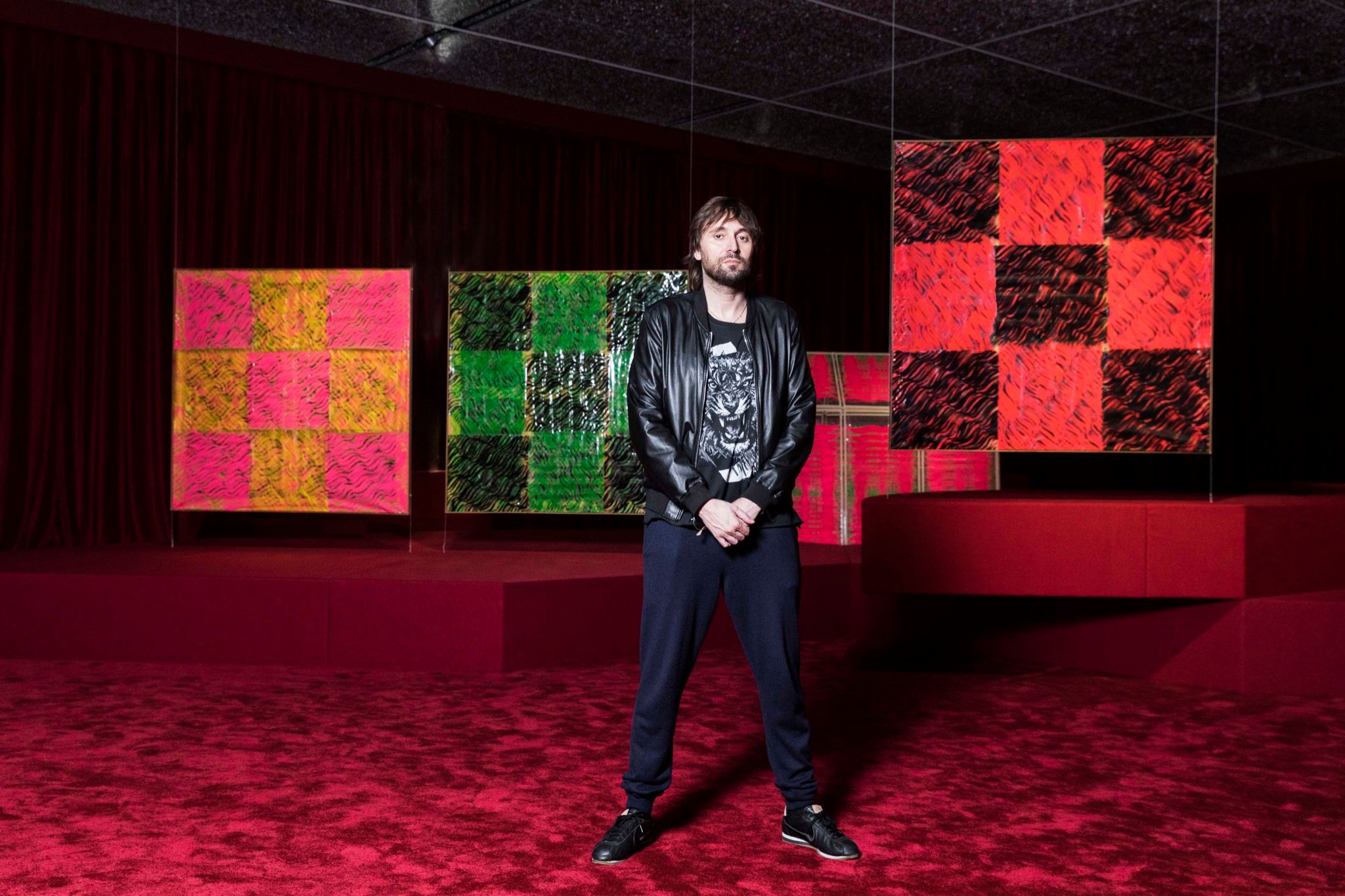“Snowflake”: MARC BRANDENBURG on Solitude, Protest, and Berlin’s Most Liberal Era Ever
|Victoria Camblin

Marc Brandenburg’s “Snowflake,” currently on view in Paris at Galerie Thaddaeus Ropac, is named for Chuck Palahniuk’s Fight Club (1996) coinage, a term also deployed in various waves of discourse and election cycles to slam the over-sensitivity, privilege, and inflated individualism of the millennial ego. Brandenburg’s oeuvre encompasses performance, film, photography, and installation, but this latest exhibition focuses on the meticulous pencil drawings he has been creating since the 1990s: delicate portraits of people observed on the street, some engaged in public protest, others strung out on corners, everyone expressing a kind of precarity.
Drawing in black and white from photographs taken on walks through Berlin and other cities, Brandenburg isolates these figures from their social and infrastructural surroundings, their dissociated silhouettes floating, alienated, in a white abyss of paper medium. The harshness of that excision, and perhaps of the human experience, is escalated in Brandenburg’s high contrast “reverse-negative” technique and black-lit display, a process through which social relations and received identities are obscured and inverted. The resulting images both document and subvert contemporary community, and do so with the same mingling of curiosity and play, mischief and depravity, that one might expect at a masquerade.

Costume, and masks specifically, have informed Brandenburg since at least his teen years, a time he spent submerged in the convulsive scene that coalesced in West Berlin a decade or so before the Wall came down. His father, from Detroit, was in the US military; his mother, a German, liked to dress up. So did the meta-punk new guard of 1980s Berlin, where Brandenburg worked at the legendary Dschungel Club, created experimental fashions with designers Claudia Skoda and Tabea Blumenschein, and performed with Die Tödliche Doris (the radical collective that inspired 032c’s forthcoming clothing line). In the 1990s, alongside his drawing practice, Brandenburg began making work that addresses the politics and performance of exposing and disguising one’s identity. His full-body cable-knit “camouflage” outfits, which include a “Burberry” print head-to-toe balaclava designed for attending protests, are wearable caricatures of the racial and cultural stereotypes we inhabit, receive, and project as public selves. These mischievous investigations predate what we have come to know as “these unprecedented times,” even if they resonate with 2020’s headlines of solitude and group membership, social unrest and personal safety. What underlies Brandenburg’s work, though, is an impulse toward sex, death, and tragicomedy that is ageless.

Victoria Camblin: You’ve been working with fine pencil drawing for a number of years – individual portraits cut from street scenes, sporting events, public demonstrations. Has the subject matter evolved?
Marc Brandenburg: I think subject matter doesn’t change much throughout a lifetime. What changes is the way we look at things. [Gaining] different angles, different perspectives – it is the process of translating inspirational surroundings into whatever. In my case, into artwork.
Oliver Koerner von Gustorf suggests in the exhibition text for “Snowflake” that the reversed or “negative” effect of your drawings is a way of visualizing the feeling of isolation caused by our violent and unequal society.
I am not going to argue with that. I always find it interesting how others read the imagery, especially if they are smart and dedicated to what they do. I try not to give any kind of meaning, and usually I couldn’t, even if I wanted to. Instead it often comes to me when I look back.
I often think your drawings look like heat maps – thermal readings of cities. Walking around cities is also part of the process of making these particular drawings. Do you see this as a kind of urban study?
Sounds like chemistry – a very chic description. Urban study would definitely be one way to read the work, and by isolating the subject you really are highlighting something that is often overlooked.


“I think artists need this perverted streak to look at other people’s misery and be able to translate that in a truthful way.”
Can you comment on the choice of “Snowflake” for the exhibition title? Discussing this term in the office recently, we realized that it stands for a lot of different things. The press release references Fight Club, but I think of the term resurfacing in 2016, around Brexit and the election of Trump. My sense is that part of it, for you, is about expressing emotion, specifically sadness or vulnerability. But there is a violence to the term and how it has been deployed.
You’ve basically proven me right in my choice of title. It can mean so much. It has become a word used as a slur by both sides of the political aisle, which is bizarre. I love a single-word title that doesn’t make you sound pretentious and smarter than you really are.
It also strikes me that there is a kind of contrast or doubling between the very delicate quality of the drawings and the harshness of their subject matter. Is this part of a bigger matrix of double meanings and perceived opposites? I’m thinking for example about the communal, group events such as protests and the isolated individuals as they are portrayed – the alienation experienced in a crowd, the solitude in seeking belonging.
My participation always feels more like an out-of-body experience than anything else – it’s definitely not about belonging. There is something very perverted about the way I take things in and create a visual document, because so much of it is about getting the aesthetics right. I think artists need this perverted streak to look at other people’s misery and be able to translate that in a truthful way. It has to be voyeuristic. I am always searching to capture the subject in an unaware moment. You do not want to go up to a homeless person covered in vomit and say, “Pose.” Instead, you want to be discreet in your documentation. The biggest perversion is inequality.

“I’m shocked at the amount of whining and lack of restraint after so little time. There shouldn’t even be a discourse at this point. Everyone should be informed by now.”
What concerns or preoccupies you most about the conversation, particularly recently – say, about the emotional health of society?
I will need to answer that after therapy.
Looking back at the last years, it seems we are still getting used to life being worse than an episode of Black Mirror. The combination of social media and social distancing has given us batshit right-wing crazies, like those involved with QAnon. It just shows how empty a lot of people seem to be that they can fill themselves with so much negative nonsense.
Are you an optimist, generally?
If seeing beauty in a pool of vomit counts as being an optimist, I guess I am.
How did you arrive at the black light for the display? Is it way too cheesy to ask if, among other things, it connects to the “club” aesthetic of 1990s Berlin that is also a part of your background?
The black light idea came about by accident, although there are no accidents. I walked into Kumpelnest 3000, which is partially lit by UV light, with a roll of drawing paper under my arm. Ta da… It was so ridiculously simple and effective, putting the work at the center of attention while blending out the wine bar.
You’ve also drawn a number of interiors – deserted salons, etc. How do you relate the interior – space – and the interior – self? I’m considering this dynamic especially because we have this cliché now about everyone staying home and going crazy.
The interiors are a great example of how past work can take on a whole new meaning in changing circumstances. In times of Covid it is seen in a very different way. I’ve been a recluse for years now, so what’s new?

The isolation and precarity of the moment seem poised to return, perhaps eternally. What does loneliness feel or look like to you?
Creative crisis would plunge me into a dark place and would probably be the closest I come to the feeling of loneliness. As long as I can work, I’m good.
As an artist, how important is community to you in terms of developing and sharing work? What is the role of collaboration in your work historically and now?
I’m someone that prefers to work alone, just like I used to go out to clubs alone – that comes naturally to me. But in the last 30 years I have collaborated with a handful of artists from different fields, like African American writer and activist Darius James, filmmaker Bruce LaBruce, musician and producer Moritz von Oswald, and designers Bernhard Willhelm and Bless.
Speaking of clothing designers, your Camouflage-Pullovers take on an interesting dynamic in a time when everyone is arguing about masks. The outfits propose full-body knits that convey one very direct message about identity. Is this a consideration of the fiction of the fully expressed individual? Of the idea that others will project a prejudiced idea onto you regardless of what you wear?
It is strange, because everyone is arguing about masks and also about race. Finally. The Camouflage-Pullovers turned out to be extremely fitting for these times. I was aware that the concept would be more terrifying and serious for some than others. It was important to give everyone the possibility to be forced into another skin and to feel the terror of that idea. Sometimes you need a perverted idea to describe an even more perverted reality.




What is your opinion of this idea that a mask is a hinderance to personal freedom?
I’m shocked at the amount of whining and lack of restraint after so little time. There shouldn’t even be a discourse at this point. Everyone should be informed by now.
How are you using masking – broadly defined – to explore social topics or the notion of the individual, and is there something about the current moment of protest against restrictions that highlights or changes aspects of your exploration?
In Germany it has been illegal to disguise yourself while taking part in demonstrations since the mid-1980s. The Burberrys Hasskappe, a piece from 1992, was definitely a play on that. When I come to think of it, there is a consistency in the element of disguise in my work.
How do people generally respond to the Camouflage-Pullovers?
I filmed the performers in very short segments on an iPhone, so people were very perplexed and didn’t really know what was going on. We had to be quick and not give them time to pull out their own phones.
“Berlin and fashion only work when [the city] doesn’t try too hard … There is a certain sense of style here that has nothing to do with what is considered fashion.”
You’ve also done work with tattoos. Is that another exploration of how people assert themselves or express community membership?
As someone mostly working with the medium of drawing but also interested in being visible in public spaces, temporary tattoos were perfect [to work with]. I turned my work into something new through reproduction, and bodies into message boards. My neighbor’s kids would wear tattoos of junkies, Aldi bags, overflowing ashtrays, and used condoms to school. Images that were normally overlooked became conversation pieces.
How would you describe your relationship to fashion?
I grew up with a mother that wore six-inch green Christian Dior platform shoes to go grocery shopping, so I was made aware of the importance of presentation through fashion at a very young age. Later, during punk and postpunk, the way you looked was the major way of expression.
What’s your take on Berlin’s role in fashion, and fashion’s role in Berlin, as a creative capital?
Berlin and fashion only work when the city doesn’t try too hard. I never understood the terrible fashion week. There is a certain sense of style here that has nothing to do with what is considered fashion.
I’m not sure if you follow fashion news, but the conversation of both copying and cultural appropriation is in the headlines again. Virgil Abloh has been accused of stealing designs by Walter van Beirendonck for his latest Louis Vuitton collection and people are upset. But Van Beirendonck to me is someone whose work is culturally appropriationist – using headdresses, referencing African masks – so it feels more like commentary or a gesture of reclamation, even if it wasn’t intended as such. Do you have a position on the appropriation discussion?
I wish cornrows on a white dude were our biggest challenge in these times. I grew up in the 1970s with a white mother that wore dashikis and huge Angela Davis-sized Afro wigs. It might be looked upon as silly and superficial now, but it was the first time I know of that the aesthetic of African hair was adopted by whites in a serious manner and considered beautiful. So I see cultural appropriation in a slightly different way, being from a different generation.

I’m also wondering if the late Patrick Kelly – a Black designer known for a kind of reclamation of racist representational tropes – is an influence for you.
I knew of Patrick Kelly back then, but fashion-wise I was still very much into the ideas of Seditionaries and Vivienne Westwood and Worlds End by Malcolm McLaren. I can tell you that Patrick Kelly would definitely have a lot of drama and explaining to do nowadays.
How did you experience racism in Berlin in the 1980s punk scene versus in the art scene in subsequent decades? What’s your view on the evolution of attitudes and frameworks? How would you compare that with your experience of the United States or elsewhere?
I lived in a parallel world among creative freaks, in times that, looking back, were the most liberal ever.




Credits
- Text: Victoria Camblin


